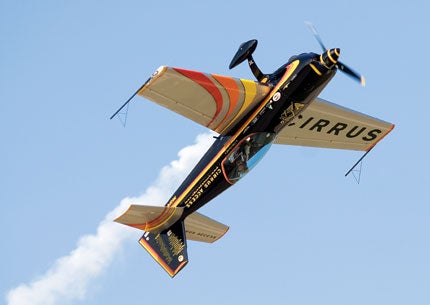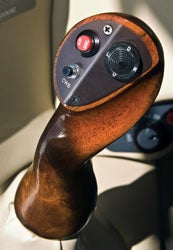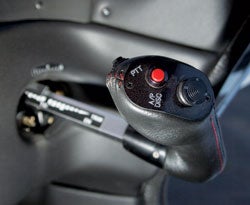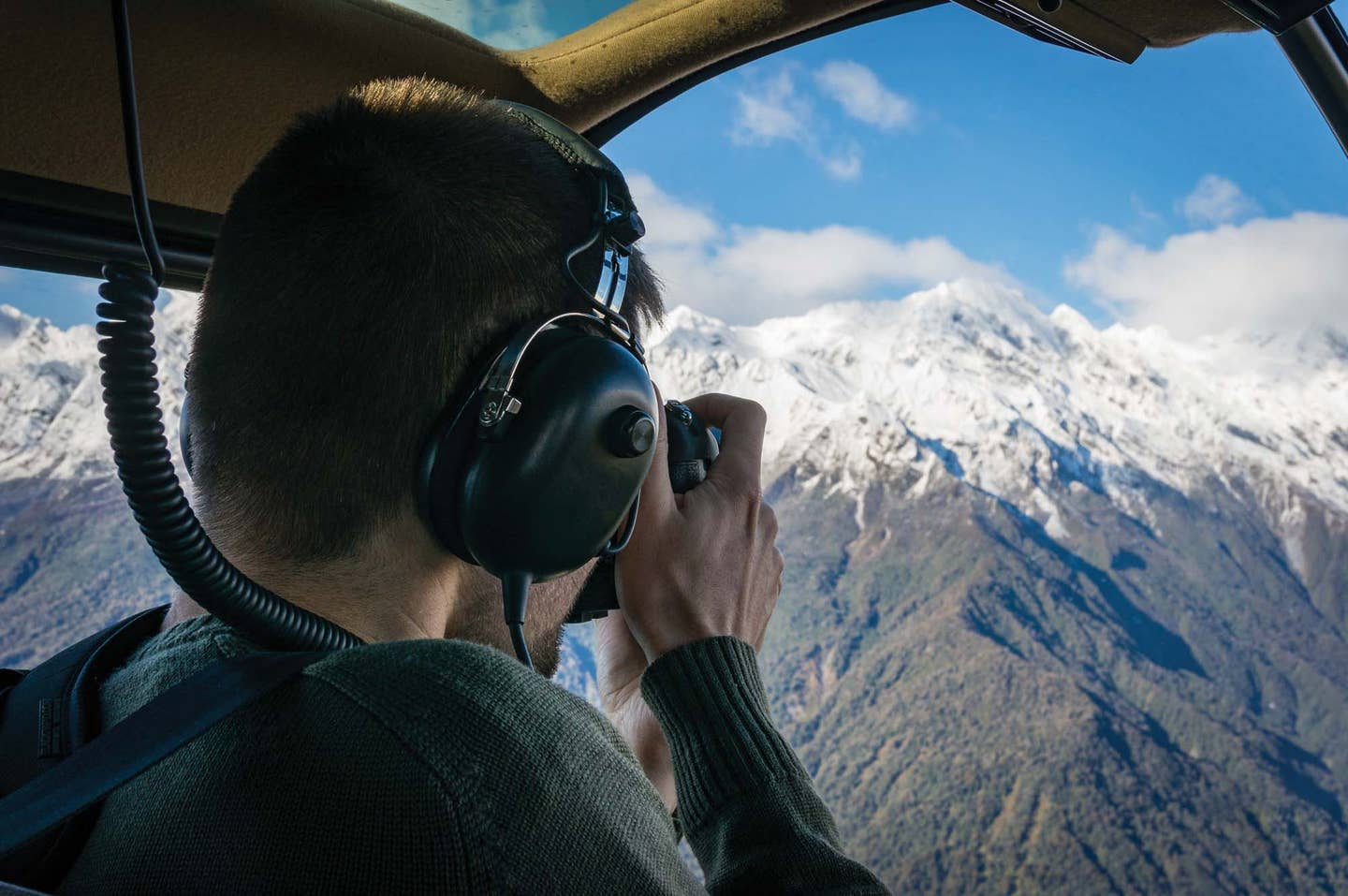 We've all seen super-pilots, such as Patty Wagstaff and Sean Tucker, who seem so in control of their airplanes that they're never where they're not supposed to be. Their airplanes flow from one position to another in a seamless rendition of flight that we know, for a fact, we can't come close to duplicating. Or can we?
We've all seen super-pilots, such as Patty Wagstaff and Sean Tucker, who seem so in control of their airplanes that they're never where they're not supposed to be. Their airplanes flow from one position to another in a seamless rendition of flight that we know, for a fact, we can't come close to duplicating. Or can we?
Look around: Don't we all know local pilots who, although they aren't flying upside down under a ribbon on their approaches, at least have that same flowing, effortless feel to their flying? When you're in the cockpit with them, it seems as if the airplane is in a groove, and that groove always puts the airplane exactly in the right spot. Now, stand back and look at them, then look at the Wagstaffs and the Tuckers of the world. Isn't there a commonality between them? Sure, the attitudes may not be as extreme, but the ability to control the details isn't specific to super-pilots on the air show circuit. What exactly is it that they're doing that makes them so smooth and always ahead of the airplane? If we can identify those little tricks, then can we train ourselves in that direction and narrow the skill gap that exists between us and them?
Unfortunately, something these pilots have in common is that if we were to ask, "What are you doing that makes you so smooth and able to precisely control the airplane?" they won't be able to tell us, because they don't know. It's just something they do, so they can't sit down and discuss it. And that's just a little maddening to those of us hoping to come away with a crumb of knowledge that will make us better pilots.
Those factors of flight that make a pilot so much smoother and more precise than the majority of aviators have fascinated some of us for years. No, we haven't come up with any exact answers, but we do have our theories. And, if you'll allow us---more properly, me---to run off in tangential directions, then I'll point out where those theories came from.
I had the rare experience of being good friends with one of the premier gun makers of our times, John Bivins. Among his many talents, he specialized in creating Pennsylvania/Kentucky long rifles---those gorgeous and thoroughly American flintlock artifacts of the late 1700s that invariably had rococo carvings of leaves, vines, etc. standing proud on their curly maple stocks.
 At one point, Bivins invited me down to spend a long weekend with him learning the fine art of carving. The four days I spent with him have paid off in so many ways, but, by far, the most important one (when it comes to aviation) was when I noticed that no matter how much wood he had to remove---even a huge amount like a half inch---his hypersharp chisels never removed more than a paper-thin shaving of wood at a time. The only thing that changed was the rate at which his chisels moved. At first, the chisel would be moving like a beaver, but, as he got closer and closer to the final surface he was seeking, the movements would slow down until they were painstakingly slow.
At one point, Bivins invited me down to spend a long weekend with him learning the fine art of carving. The four days I spent with him have paid off in so many ways, but, by far, the most important one (when it comes to aviation) was when I noticed that no matter how much wood he had to remove---even a huge amount like a half inch---his hypersharp chisels never removed more than a paper-thin shaving of wood at a time. The only thing that changed was the rate at which his chisels moved. At first, the chisel would be moving like a beaver, but, as he got closer and closer to the final surface he was seeking, the movements would slow down until they were painstakingly slow.
The net effect of this kind of wood removal was that, because he was always removing the same amount of wood, the only variable was the rate. He had taken the incremental decision as to how much wood to remove out of the equation and, in so doing, guaranteed that, as he came closer to the desired surface, he was much less likely to bridge "perfect" by accidentally using an increment that was too much. By taking away a paper-thin shaving at a time, he was always moving toward "perfect" and not likely to go through it.
 Whether your aircraft has a side stick, center stick or yoke, one key to flying smoothly is to think in terms of applying pressure, not moving the controls. |
This tells us exactly how we ought to be moving the airplane's controls. Or not moving them, as the case may be. We don't want to think of increments. We want to think of paper-thin shavings that, in the case of airplanes, aren't a movement, but a pressure. In other words, we don't want to think of controlling an airplane by moving the controls, but rather to think in terms of increasing or decreasing the pressure we have on the controls. We want to feel as if we're doing nothing more than increasing the pressure at a rate appropriate to what we want to do with the airplane. Yes, the pressure does result in a movement of the controls, but that movement isn't a predetermined increment. It's the result of stacking up a bunch of paper-thin shavings, or pressures, that can be varied to work our way toward perfect.
The real benefit of visualizing aircraft control in this manner is the way in which we start and stop the aircraft's movement: The controls come out of center in what amounts to a caress, a gentle squeeze. To an observer, for instance, there's no discernable start and stop to a turn. The airplane just gradually flows into the turn and regains level flight as if by magic. The passengers feel no movement at all.
A byproduct of this kind of graduated treatment of the controls is that we're far less likely to pass the position we want. And if there's one guiding goal of aviation, it's that we don't want to be correcting our corrections: We don't want to be constantly searching back and forth through perfect because we keep changing increments.
The ability to move the controls gently and precisely, however, has to be paired with one other detailed-oriented skill, and that's the ability to actually see where we want to be and what needs correcting. Another aviation truism is that we can't correct what we can't see, which brings us back to the super-pilots of the air show world.
One of the skills shared by all super- craftsmen, whether working in wood or in three-dimensional motion, e.g., the John Bivins, the Patty Wagstaffs and the race-car drivers of the world, is the ability to see miniscule movement. Call it visual acuity, if you will, but it's as if they've slowed everything down and, at the same time, magnified it in their minds so that, visually, they're working at the pixel level. They're seeing the tiniest of movements.
By comparison, you and I are working at a megapixel level. So, regardless of how much we train our hands, the real progress comes when we combine our ability to move our hands/feet in tiny, pressure-induced movements with our eye's capability to see equally small movements of the airplane. This combination is what separates the super-aviators from the rest of us: They're working at a level we can't begin to see. In truth, they're making as many mistakes as we are, but the mistakes are so tiny, and the pilot is making such miniscule control changes, that we simply can't see them, so the airplane appears to be moving on a perfect line every time.
Can we become as good as the best pilots at seeing the invisible and correcting accordingly? The short answer is "no"; most of us can't burn that much gas in practice and may not have the same amount of basic talent. But that's not the entire story. Because we now know that the ability to see and the innate capacity to pressure the controls are among the things that make them so good, we can try to duplicate those traits. Just making that effort will turn us into better pilots.
In short, we can force ourselves to see the tiniest motion of the airplane and train our hands to pressure, not move, the controls. We may never become super-pilots, but we'll climb well above average and become, if not super, at least excellent.

Subscribe to Our Newsletter
Get the latest Plane & Pilot Magazine stories delivered directly to your inbox






